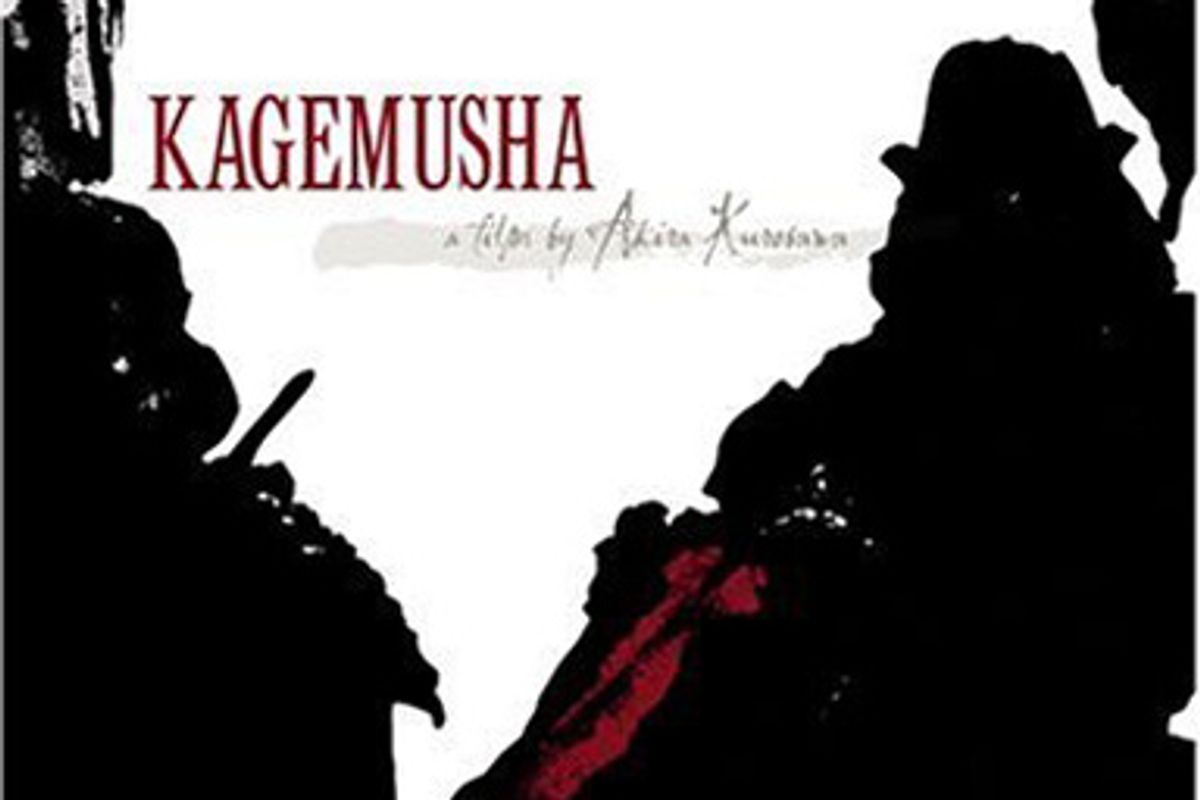Amazing as this may seem from 30 years' distance, by the late 1970s Akira Kurosawa was widely seen as a washed-up filmmaker. His black-and-white classics like "Rashomon," "The Seven Samurai" and "Yojimbo" were two decades in the past, and the Japanese media derided Kurosawa as an aging tyrant increasingly out of touch with Japan's younger generation. Unable to raise money for an epic tragedy set against the feudal wars of 16th-century Japan, Kurosawa went to the Soviet Union to make "Dersu Uzala," a surprising winner of the 1976 foreign-language Oscar. At the Academy Awards ceremony, Kurosawa met Francis Ford Coppola and George Lucas, two younger filmmakers who worshiped him -- Lucas has described "Star Wars," about half-jokingly, as a remake of Kurosawa's "Hidden Fortress" -- and told them about his long-brewing project. So began the process that produced "Kagemusha (The Shadow Warrior)," the full-scale masterwork of Kurosawa's late career.
As Lucas disarmingly tells the story in a mini-feature on Criterion's new deluxe double-disc set of "Kagemusha," he understood very well that 20th-Century Fox, the studio whose coffers he had filled to overflowing, would do anything he wanted. So Lucas went to Fox head Alan Ladd Jr. and told him to supply the missing funds for Kurosawa's picture, which cost about $6 million in 1979 dollars, a big budget by Japanese standards. I don't know whether Ladd ever saw any profit on that investment, but what he bought was one of the greatest pictorial spectacles in movie history, an epic drama after the fashion of Shakespeare's history plays that's about a dying king, his base-born double ("kagemusha," in Japanese) and the ill-fated clan war that destroys both of them.
Intriguingly, Lucas and Coppola both seem to look back on their experience as Kurosawa's executive producers with some regret. Maybe it's always hard to watch someone else direct a film (even someone you've admired for so long) -- and maybe Coppola just wishes he hadn't participated in Kurosawa's hilariously awful commercials for Suntory whiskey, which are included herein. Neither man seems to appreciate the quiet, Noh-theater brilliance of Tatsuya Nakadai's dual performance as Lord Shingen and the convicted thief his clan drafts to impersonate him. Japanese action star Shintaro Katsu, best known for his roles as blind swordsman Zatoichi, was originally supposed to play both roles, and Lucas and Coppola still miss his freewheeling, wild-man presence, three decades later.
I find Nakadai's careful, precise characterization very moving, but there's no question that "Kagemusha," Kurosawa's most accomplished venture into wide-screen Technicolor, is first and foremost an overwhelming visual spectacle, and one that provides a template for period-based war and adventure films from "Saving Private Ryan" to "Braveheart" to "Curse of the Golden Flower." Every composition -- from the fluid, horizontal battle scenes to the static, painterly interludes of court intrigue -- is marvelously constructed and framed. Despite never hurrying, the flow of images across three full hours ramps up intense dramatic tension. I'm generally immune to the kinds of movies home-theater mavens favor, but I regretted having to watch "Kagemusha" on a relatively small screen. If you've got a $7,000 setup, I've got the disc. I'll bring some decent beer, but we can skip the shots of Suntory.

Shares